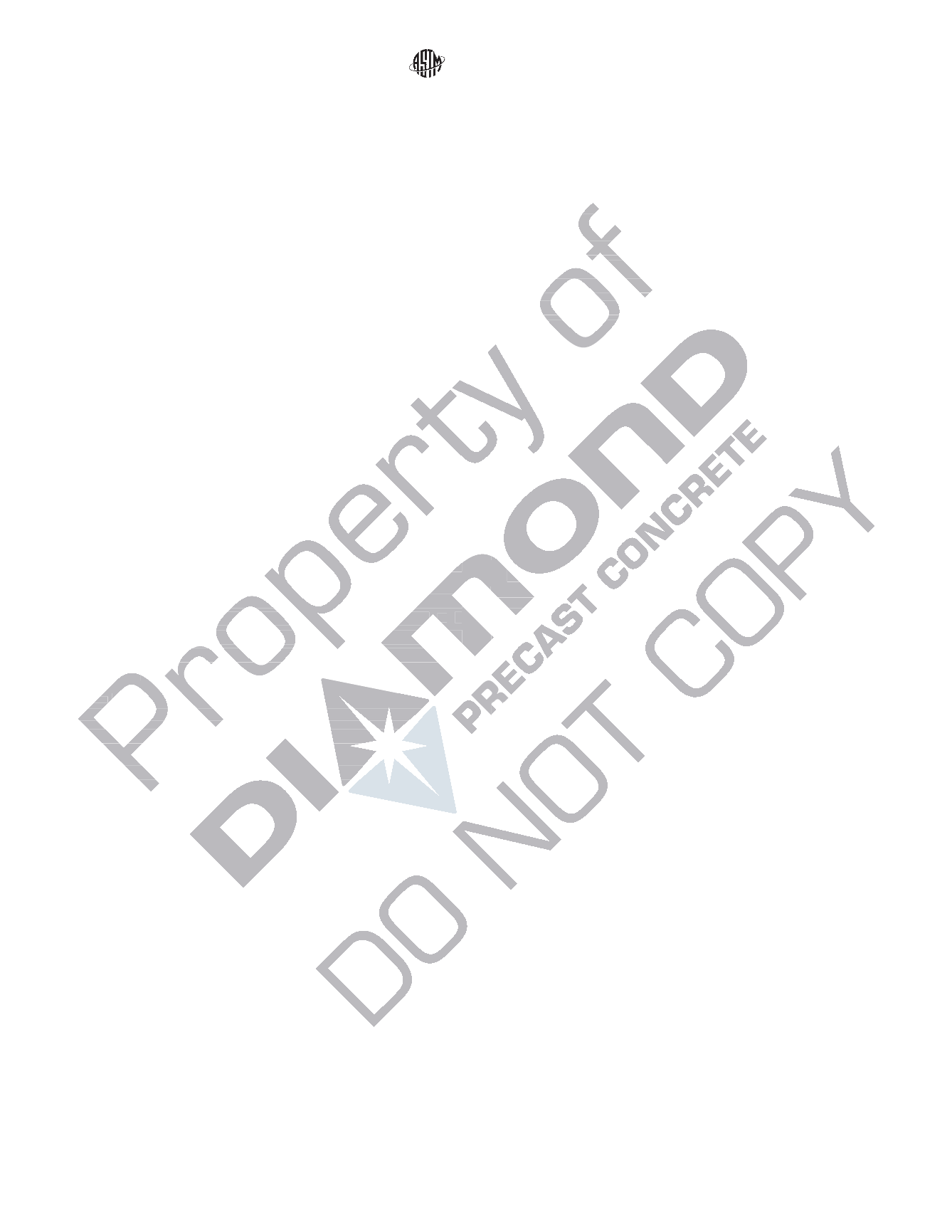

16.3
Materials:
16.3.1 Except as required by Section
16
, manhole steps and
ladders shall conform to the requirements of the Occupational
Safety and Health Standards, U.S. Department of Labor.
16.3.2 Manhole steps that are cast, mortared, or attached by
mechanical means into the walls of base, riser or conical top
sections shall meet the requirements of
16.4
and
16.5
in
addition to the following:
16.3.2.1 When dissimilar types of materials are used in the
steps, appurtenances and fastenings, the materials shall be
treated to prevent deleterious effects.
16.3.2.2 That portion of the step projecting into the base
section, riser or conical top opening shall be free of splinters,
sharp edges, burrs, or projections which may be a hazard.
16.4
Design:
16.4.1 Steps in base section, riser and conical top sections
shall be aligned in each section so as to form a continuous
ladder with rungs equally spaced vertically in the assembled
manhole at a maximum design distance of 400 mm apart.
16.4.2 Steps shall be embedded in the base section, riser or
conical top section wall a minimum distance of 75 mm.
16.5
Dimensions:
16.5.1 Ferrous metal steps not painted or treated to resist
corrosion shall have a minimum cross sectional dimension of
25 mm.
16.5.2 The minimum width of rungs or cleats shall be 250
mm.
16.5.3 The rung or cleat shall project a uniform clear
distance of 100 mm (minimum) to 150 mm (maximum)
6
6
mm from the wall of the base, riser, or conical top section
measured from the point of embedment to the embedment side
of the rung.
N
OTE
5—Embedment point is considered the junction of the centerline
of the step leg and the wall of the base, riser or conical top section.
16.5.4 The minimum clear distance between the rung or
cleat and the opposite wall of the base, riser, or conical top
shall be 450 mm measured at the center face of the rung or
cleat.
16.5.5 The vertical spacing and vertical alignment between
adjacent manhole steps and horizontal distance from the inside
wall to the centerline of a manhole step may vary 25 mm from
the design dimension.
16.6
Physical Requirements:
16.6.1
Testing:
16.6.1.1 The manufacturer furnishing manhole sections
with steps under this specification shall furnish all facilities and
personnel necessary to carry out the tests required in the
Manhole Step Test section of Test Methods
C497
.
16.6.1.2 One installed manhole step of the type to be used
on a project shall be tested unless certified test results are
available.
16.6.1.3 Vertical and horizontal load test procedures for
manhole steps shall be in accordance with Test Methods
C497
.
16.6.1.4 The horizontal pull out load shall be 1800
N
.
16.6.1.5 The vertical load shall be 3600
N
.
16.6.2
Acceptance—
The step shall be acceptable if the
following requirements are met:
16.6.2.1 The step remains solidly embedded after applica-
tion of the horizontal load test.
16.6.2.2 The step sustains a permanent set of 13 mm or less
after application of the vertical load test.
16.6.2.3 No cracking or fracture of the step nor spalling of
the concrete is evident.
16.6.2.4 If certified test results are not available and the step
selected fails to conform to the test requirements, the manu-
facturer may select two other steps for retests. If either of these
steps fail the retest, the steps shall be rejected.
17. Keywords
17.1 absorption; acceptance criteria; base sections; com-
pressive strength; concrete; cone tops; design; flat slab tops;
grade rings; ladders; manhole; manufacture; reinforced; riser
sections; sewer; steps; tests; water
ASTM International takes no position respecting the validity of any patent rights asserted in connection with any item mentioned
in this standard. Users of this standard are expressly advised that determination of the validity of any such patent rights, and the risk
of infringement of such rights, are entirely their own responsibility.
This standard is subject to revision at any time by the responsible technical committee and must be reviewed every five years and
if not revised, either reapproved or withdrawn. Your comments are invited either for revision of this standard or for additional standards
and should be addressed to ASTM International Headquarters. Your comments will receive careful consideration at a meeting of the
responsible technical committee, which you may attend. If you feel that your comments have not received a fair hearing you should
make your views known to the ASTM Committee on Standards, at the address shown below.
This standard is copyrighted by ASTM International, 100 Barr Harbor Drive, PO Box C700, West Conshohocken, PA 19428-2959,
United States. Individual reprints (single or multiple copies) of this standard may be obtained by contacting ASTM at the above
address or at 610-832-9585 (phone), 610-832-9555 (fax), or
service@astm.org(e-mail); or through the ASTM website
(www.astm.org). Permission rights to photocopy the standard may also be secured from the Copyright Clearance Center, 222
Rosewood Drive, Danvers, MA 01923, Tel: (978) 646-2600;
http://www.copyright.com/C478M − 15
9
Copyright by ASTM Int'l (all rights reserved); Mon Jun 29 17:17:40 EDT 2015
Downloaded/printed by
Jed Friesen (Predl Systems) pursuant to License Agreement. No further reproductions authorized.
















